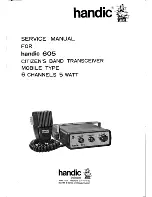
10
BASIC USAGE INFORMATION
USING INTERNAL BATTERIES
The SDS100 is powered by a Lithium Ion battery.
When the scanner is turned on, the scanner does not charge the batteries. When the scanner is
turned off, the scanner will charge the batteries.
You charge the scanner’s battery by connecting a USB power source to the scanner’s USB mini
connector and powering off the scanner. Note that the power source must be rated 1A or higher to
charge at a full rate. If you connect to a PC or other lower-power USB source, charging will take
longer. You can power the scanner by connecting to either the USB micro or mini connector, but
only the mini connector can be used for charging.
The included AC adapter is rated at 2A and can power or charge the SDS100
The scanner’s charge indicator is red during charge and green when complete.
Note:
If the scanner gets too hot while charging, it will turn off automatically.
VIEW THE BATTERY LEVEL
You can set a custom display area to show the battery voltage level. See “Customizing the
Display.”
UNDERSTANDING THE MEMORY
All information contained in the scanner is stored on a microSD card supplied with the scanner.
This includes Favorites Lists, all the radio settings, and the Radio Reference database.
FAVORITES LISTS
Because the memory is based on the RadioReference database, the SDS100 has a different
organization unlike banks and channels in older scanners, but more like Dynamic Memory
Architecture (DMA) used for the last few generations of scanners. Favorites Lists follow the
RR database structure of Systems that contain Departments that hold Channels (conventional
frequencies or IDs) and then Sites to hold trunking frequencies. If you are familiar with DMA
scanners, think of departments as being like channel groups.
Favorites Lists will allow you to store channels you find when you are scanning from the full
database (the easiest way). They can contain channels from trunking systems and conventional
systems. You can also manually add systems, (not single sites), departments and channels into
Favorites Lists from the database as well as program new systems, departments, sites, and
channels with the Sentinel software.
You can save up to 256 different lists in the scanner (and software) and associate them with any
or all of your profiles. You can monitor one or more lists at a time and/or the database. You can
also export your lists to a file to share them. Deleting a profile will not delete the lists associated
with a profile. However, deleting a Favorites List will delete it from all profiles.
SYSTEMS
Systems hold all of your Sites, Departments, and Channels.
Summary of Contents for SDS100
Page 1: ...2018 Uniden America Corporation Printed in Vietnam UOl UB383ZZZ O SDS100 Owner s Manual...
Page 6: ......
Page 61: ...55...
Page 62: ...56...
















































